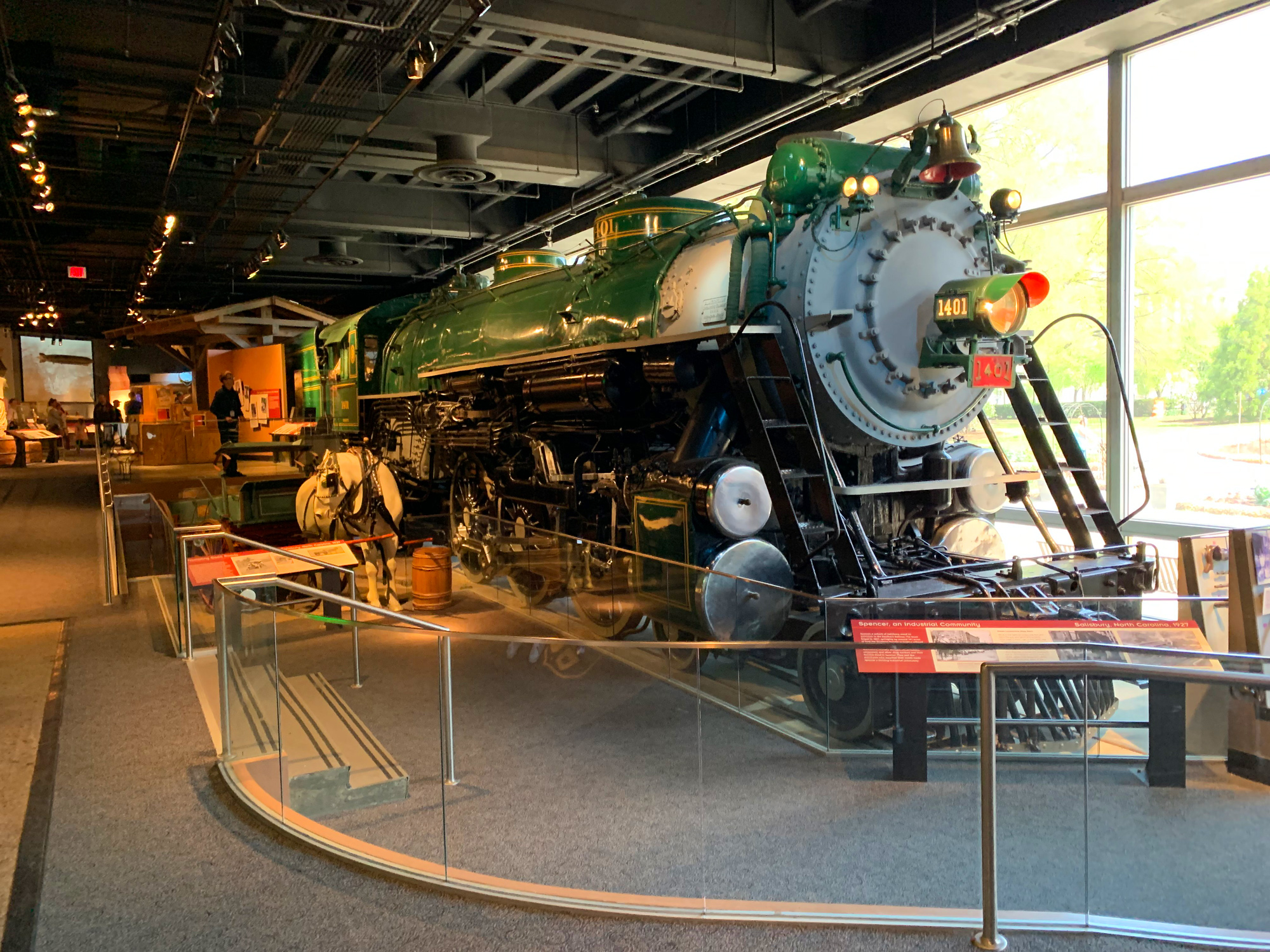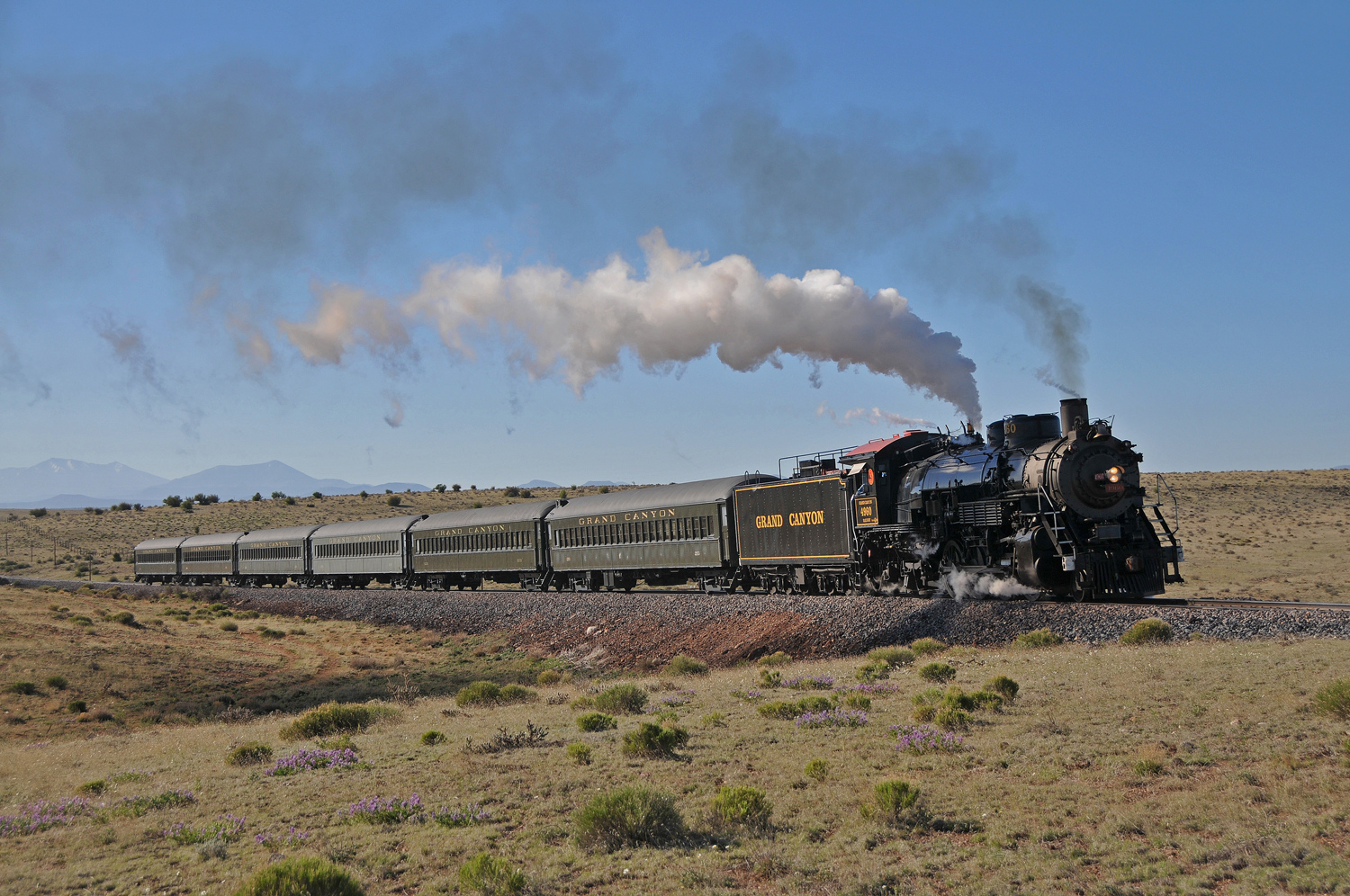Southern No. 1401: Elegance At The Smithsonian
Published: February 3, 2025
By: Adam Burns
Southern No. 1401 is more than just a relic of the American railway system. It is a symbol of an era when steam power was at the forefront of transportation innovation and economic expansion in the United States.
The elegant engine was tasked with transporting the company's flagship passenger trains - notably the Crescent - between Washington, D.C., and Atlanta, Georgia. Adorned in a Virginian Green and gold livery, #1401, along with its fellow Ps-4 locomotives, earned the epithet "First Ladies of the Pacifics" throughout the Southern system.
Initially, these engines featured Baker valve gear and alligator crossheads, but they were upgraded in the 1930s with Walschaerts valve gear and in the early 1940s with multiple-bearing crossheads. In 1945, No. 1401 notably transported the funeral train of U.S. President Franklin D. Roosevelt.
Following its 1952 retirement, No. 1401 was donated to the National Museum of American History in Washington, D.C., in 1961 where it serves as a testament to the engineering feats and cultural impact of the railroad industry. It remains on permanent display at the Museum of American History as the only surviving example from the Ps-4 Class.
 A present-day view of Southern Railway 4-6-2 #1401 (Ps4) on display at the Smithsonian's Museum of American History. Author's photo.
A present-day view of Southern Railway 4-6-2 #1401 (Ps4) on display at the Smithsonian's Museum of American History. Author's photo.Evolution and Significance
The 4-6-2 wheel arrangement, also known as the "Pacific" type, was a popular design in the early 20th century. The numbers refer to the wheel arrangement – four leading wheels, six driving wheels, and two trailing wheels. This configuration offered a perfect balance of speed and power, making it ideal for pulling both passenger and freight trains over long distances.
The Pacific became particularly prominent due to its increased steam capacity and larger firebox, allowing for more efficient fuel use and greater power output. This efficiency was crucial as railways became the backbone of America's transportation network.
In the 1920s, the Southern primarily operated Ps-2 light Pacifics, which proved inadequate for managing the longer, heavier passenger trains on the mainline route between Washington and Atlanta.
Consequently, the railroad ordered 27 heavy Pacifics from American Locomotive; based on the USRA design they were given Class Ps-4, numbered 1366–1392 and completed between 1923-1924.
These locomotives were originally adorned in black with golden yellow trim and lettering, capable of delivering 47,535 pounds of tractive effort and hauling 14 passenger cars at speeds of up to 80 mph over the Piedmont region.
In 1925, Southern President Fairfax Harrison, inspired by the aesthetic of London & North Eastern Railway's apple-green Gresley A1-class engines, began repainting the Ps-4s in a distinctive Virginian green and gold color scheme.
With the success of these Pacifics - and in need of more to meet demand, the railroad ordered twelve more examples - numbered 1393-1404 - from Alco's Richmond Works that were completed in the summer of 1926.
These later locomotives incorporated an Elesco feedwater heater instead of the Worthington type, enhancing their performance. The Ps-4s, with their striking green and gold livery, were affectionately dubbed the "First Ladies of the Pacifics" and informally known as the "Harrison Engines."
Southern personnel further embellished these locomotives with brass flag holders on their headlights, a brass eagle ornament at the front of their smokebox doors, and brass stars on their cylinder head caps, giving them an elegant and ornate appearance.
In 1928, Baldwin produced the final batch of five Ps-4s, numbered 1405–1409. Unlike the earlier batches, which featured Baker valve gear, the 1928 examples were equipped with Walschaerts valve gear. Notably, locomotive No. 1409 was trialed with a Coffin feedwater heater, which was soon replaced by a Worthington SA type in the 1940s.
It was around this time the Ps-4s were upgraded with multiple-bearing crossheads to replace their original alligator crossheads. Furthermore, Nos. 1366–1409 underwent modifications to incorporate a higher and straighter front running board, accommodating easier access to their cylinders and running gear for crew members tasked with maintaining the mechanical lubrication system. The locomotives' tender coal bunkers were also expanded to increase fuel capacity.
Operational History
The Southern Railway was a major player in the transportation industry, with lines spanning throughout the Southeast. At its peak it maintained a system of over 7,500 route miles and was one of the nation's most prosperous railroads.
No. 1401, the forty-sixth unit in the Ps-4 class, was part of the second series constructed in 1926. Initially, it operated on the Atlanta Division, where it was tasked with the important role of hauling prestigious trains like the Crescent Limited and the Piedmont Limited.
The railroad was quick to adopt the diesel and began acquiring its first E6s for passenger service in March 1941. These sleek machines were immediately given the top assignments, bumping the Pacifics to local service and mail trains.
In November 1952, No. 1401 was retired after concluding its last service run on the Danville Division. During its operational history the locomotive had amassed approximately 2,000,000 miles in service.
During its retirement phase, rail enthusiast Walter H. Thrall and Washington, D.C. attorney W. Graham Claytor Jr. successfully persuaded President Harry A. DeButts to preserve one of the Ps-4s.
Consequently, the decision was made to donate it to the Smithsonian Institution. On February 10, 1953, No. 1401 was selected for preservation and was transported to Alexandria, Virginia, to be housed at the Henry Street Yard pending the Smithsonian's determination.
By 1955, the Smithsonian formally acquired No. 1401, announcing its display in the newly established Museum of History and Technology.
Journey to the Smithsonian
In 1961, the Smithsonian recognized the need to preserve America's industrial heritage and selected Southern Railway No. 1401 for display. Its inclusion in the museum's exhibition marked the beginning of a renewed interest in the cultural and historical importance of railroads in America.
Once there, No. 1401 became a centerpiece in the museum's "America on the Move" exhibit, which opened in November 1964. The exhibit explores the impact of transportation on American society, economy, and culture.
Educational and Inspiring
For students, historians, and visitors, No. 1401 provides an educational journey into America's industrial past. The locomotive offers insights into technological advancements and their broader societal impacts. It highlights the challenges and triumphs of engineering during a period of rapid industrial growth.
Furthermore, the engine inspires future generations of engineers and innovators. Its story encourages curiosity about the evolution of technology and transportation and inspires a deeper understanding of how these advancements continue to shape our lives today.
Data Sheet
| Builder | American Locomotive Company (Richmond Works) |
| Serial Number | 66888 |
| Build Date | July 1926 |
| Specifications | |
|---|---|
| Whyte Notation | 4-6-2 |
| Gauge | 4 feet, 8 1⁄2 inches |
| Leading Wheel Diameter | 33 inches |
| Driver Wheel Diameter | 73 inches |
| Trailing Wheel Diameter | 43 inches |
| Locomotive Weight | 304,000 lbs |
| Tender Weight | 261,600 lbs |
| Total Weight | 565,600 lbs |
| Fuel Type | Coal |
| Fuel Capacity | 16 tons |
| Water Capacity | 14,000 US gallons |
| Grate Area | 70 1⁄2 square feet |
| Boiler Pressure | 200 psi |
| Feedwater Heater | Elesco |
| Cylinders | Two |
| Cylinder Size | 27 inches × 28 inches |
| Valve Gear | Walschaerts (originally Baker) |
| Performance Figures | |
| Maximum Speed | 60–80 mph |
| Power | 2,624 dhp |
| Tractive Effort | 47,535 lbs |
| Factor of Adhesion | 3.79 |
No. 1401 is an invaluable artifact of American heritage. As a work of engineering, it exemplifies the technological prowess and ambition of the steam era. As a cultural icon, it narrates the story of a nation in transit, driven by innovation and exploration.
Today, it continues to proudly wear the Southern's handsome Virginia Green livery and certainly appears as if it could immediately be fired up and retired to service.
The legacy of No. 1401 continues as it educates, informs, and inspires visitors from around the world. It stands as a powerful reminder of the transformative impact of railroads in shaping the United States, reminding us of an age when the whistle of a steam engine was the sound of progress.
Recent Articles
-
Florida Railroad Museums: A Complete Guide
Apr 17, 25 04:48 PM
Florida is home to many railroad museums preserving the state's rail heritage, including an organization detailing the great Overseas Railroad. -
Delaware Railroad Museums: A Complete Guide
Apr 17, 25 04:23 PM
Delaware may rank 49th in state size but has a long history with trains. Today, a few museums dot the region. -
Arizona Railroad Museums: A Complete Guide
Apr 16, 25 01:17 PM
Learn about Arizona's rich history with railroads at one of several museums scattered throughout the state. More information about these organizations may be found here.
